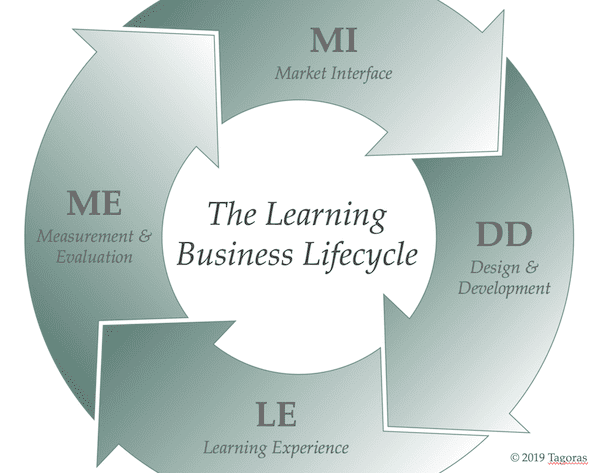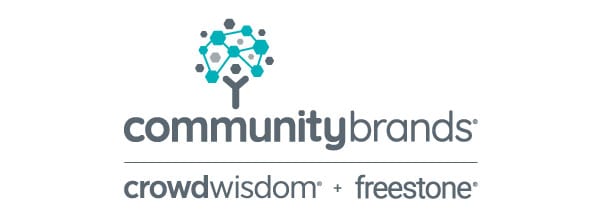It’s been a while since Jeff’s book, Leading the Learning Revolution: The Expert’s Guide to Capitalizing on the Exploding Lifelong Education Market was published but the key concepts behind it remain highly relevant and are fundamental to running a successful learning business. That’s because the learning revolution is far from over, and in fact, it’s still unfolding.
In this episode of the Leading Learning podcast, Celisa and Jeff revisit the core concepts behind the book by exploring the why, the what, and the how of the learning revolution, including their ongoing relevance and continuing evolution.
To tune in, just click below. To make sure you catch all of the future episodes, be sure to subscribe by RSS or on iTunes. And, if you like the podcast, be sure to give it a tweet!
Listen to the Show
Read the Show Notes
[00:18] – A preview of what will be covered in this episode where Celisa and Jeff discuss the why, the what, and the how of the learning revolution.
Why: Three Ideas, Tremendous Opportunity
[02:42] – The “why” of the revolution hasn’t changed fundamentally, but it definitely has evolved. Three ideas that underpin the “why” of the learning revolution:
- We live in a world that is more connected and changes more quickly than ever.
- To thrive in this world, we must continually develop new knowledge and skills.
- Technology has tipped—it’s cheap enough, it’s good enough, and enough people have access to it that it’s an integral and effective tool for learning.
The “why” ties directly into mission and vision. The mission and vision of learning businesses is to serve the needs represented by these shifts described in those three ideas mentioned, and then to capitalize on that opportunity. These underlying ideas haven’t changed, but urgency has increased as the landscape has grown more crowded and competitive for learning businesses and as the perceived need and demand for lifelong learning has escalated. Note we’ve done episodes related to how prevalent lifelong learning is now—see episode 70 ,The Mainstreaming of Lifelong Learning
Sponsor: WBT Systems
[06:11] – To help you capitalize on the tremendous opportunity for lifelong learning and help you executive in all those key areas, you need good partners. We encourage you to check out our sponsor.
WBT Systems develops the industry-leading TopClass LMS, which delivers transformative professional development experiences for education and certification programs. With a single point of support from in-house integration experts, TopClass LMS easily integrates with a wide variety of systems to provide efficient administration and a unified learning experience. WBT supports organizations in using learning technology to help drive growth in membership, increase revenues, and enhance the learning experience. WBT believes in truly understanding your challenges and partnering with you to ensure the success of your education programs.
What: Learning as a Business
[07:15] – The “what” of the revolution hasn’t fundamentally changed either. In talking about the “what,” we mean as it relates to learning businesses, since that’s who’s listening to the Leading Learning Podcast and because learning businesses are the intended audience for Leading the Learning Revolution. “What” is about what a learning business needs to do to thrive in this new learning landscape. Because of the growing of competition, not just for dollars but also for attention, and because of the growing need to provide learning experiences that learners and employers can see actually have an impact, it’s become even more important than it was when Leading the Learning Revolution first came out to think and act like a business and, most fundamentally, to be strategic in how you approach your market. More than ever it is about:
- Understanding your market and carving out a distinctive position. This is really a strategy issue. A meaningful strategy and, what’s more, a successful strategy must be grounded in solid understanding of your market and your learning business’s distinctive position within that market—so how you stand out from the competitors, the other sources your learner might turn to for support. And strategy for your learning business is something we’ve talked about on the podcast before, so if you aren’t clear on your strategy or aren’t clear your strategy is working, we encourage you to take time to revisit your market and your position in it. See episode 118, 3 Core Elements of Learning Business Strategy. Note you will find additional links to strategy resources here.
[10:34] –
- Building an audience and building relationships.We believe strongly that learning is a process; learning is not a one-off event. And that means learning is inherently relational, not transactional. And lifelong learning means there’s even more potential for long-term relationship with our learners. We actually have a learning business lifecycle that we first shared as part of our annual virtual conference, Learning • Technology • Design™(LTD) this year (below), which shows its cyclical in natural, with no start and end. It represents the ongoing process of learning, not an artificially limited view of learning with a start and an end.And in each of the four parts, you’re interacting with your audience, you’re having conversations, and you’re cultivating those relationships that are central if your learning business is to be a long-term success. So treat learning as a process; keep following the lifecycle around and around the circle, and shape your business to this.
[12:59] –
- Providing impactful learning experiences and measuring the results. We’ve devoted a past episode to impact (see episode 42, One Word: Impact) so for now we’ll simply emphasize that learning businesses need to make sure the experiences they offer are actually moving the needle, doing something. Your offerings need to move beyond simply informing learners. You need to get them to change behavior, improve performance. And ideally you move not only beyond inform but also past perform and ultimately get to transform. Offering transformational learning experiences will help you stand out from competitors.
- Recognizing the relationship between education and marketing. Education and marketing are the two sides of the learning experience coin. The learning business lifecycle—market insight (MI), design and development (DD), learning experience (LE), and measurement and evaluation (EE)—that we just mentioned shows this relationship. Market insight is where you want to start as you design and develop learning experiences, and it’s also what you want to get from offering learning experiences. The best education is also marketing—built, designed from the beginning with the target market in mind—and the best marketing is often educational—think of content marketing and the move towards offering prospects value before you ever ask or expect them to pay a penny. See Celisa’s related Inc. blog post, How You Can Use Learning to Improve Your Marketing Content.
- Thinking and acting like an organization that leads learning. Again, this is something we’ve talked about before—see episode 46, Exploring What It Means to Lead Learning. But the main point here is to be bold in pursuing your mission and vision. Learning businesses usually aren’t only after the financial bottom line. They also need and want to change behavior and positively impact the field or industry or profession they serve.
It’s worth noting that the Learning Business Maturity Model™ encapsulates and maps out these five points—it’s a more structured approach to the domains in which a learning business needs proficiency, and the more a learning business can master those domains, the more mature and successful it will be. To learn more, check out episode 56, The Learning Business Maturity Model and episode 147, Leveraging the Learning Business Maturity Model.
Sponsor: Community Brands
[16:52] – If you’re looking for a partner to help you become a more mature learning business, we suggest you check out our sponsor for this quarter.
Community Brands provides a suite of cloud-based software for organizations to engage and grow relationships with the individuals they serve, including association management software, learning management software, job board software, and event management software. Community Brands’ award-winning Crowd Wisdom learning platform is among the world’s best LMSes for corporate extended enterprise and is a leading LMS for association-driven professional education programs. Award-winning Freestone, Community Brands’ live event learning platform, is a leading platform for live learning event capture, Webinars, Webcasts, and on-demand streaming.
How: The Ever-Changing Tactics and Tools of the Revolution
[17:49] – Some of the bigger-picture “how” of the revolution has not changed much—online, for example continues to grow and seems likely to surpass face-to-face as the default delivery method for lifelong learning (if it hasn’t already). Virtual events and the use of learning communities have continued to grow. Even MOOCs, which aren’t nearly the force they were at the time Leading the Learning Revolution came out, still have quite a bit of traction—Coursera, for example, recently raised another $103M.But we’ve seen plenty come along that are entirely new, very different, or greatly improved over where we were when the book came out. For example:
- Advances in artificial intelligence (AI) and different form of virtual/augmented reality (XR). See episode 173, The Impact of Artificial Intelligence.
- The microlearning boom
- Changes to Google algorithms and SEO
- Changes in social networks—huge growth of Instagram, along with demise of Google+, widespread use of Facebook groups, especially by edupreneurs
- Many new platform players
[22:45] – So that bring us to the end of our look at the learning revolution, the why, the what, and the how. If you’re interested in these ideas and haven’t yet read it, make sure you check out Leading the Learning Revolution. Part of the reason we did this episode is that even though the book is a few years old now, those core points around the “why” and the “what” really haven’t changed and are still absolutely fundamental to running a successful learning business. And to make getting the book easy, we have a special offer for podcast listeners to get a free PDF copy—though you’re welcome, of course, to buy a hard, paperback, or Kindle copy on Amazon or the like.
[24:07] – Wrap-Up
If you are getting value from the Leading Learning podcast, be sure to subscribe by RSS or on iTunes as it helps us get some data on the impact of what we’re doing.
We’d also appreciate if you give us a rating on iTunes by going to https://www.leadinglearning.com/itunes. We personally appreciate your rating and review, but more importantly reviews and ratings play an important role in helping the podcast show up when people search for content on learning and leading.
And we would be grateful if you check out our sponsors for this quarter. Find out more about Community Brands and WBT Systems.
Finally, consider telling others about the podcast. You can send a tweet by going to leadinglearning.com/share. You can also Like us on Facebook at facebook.com/leadinglifelonglearning and share us with others there. However you do it, please do help to share the good word about the podcast.
[26:17] – Sign off
See Also:





 A Generational – and Practical – View of Learning with Michelle Ryan
A Generational – and Practical – View of Learning with Michelle Ryan
Leave a Reply